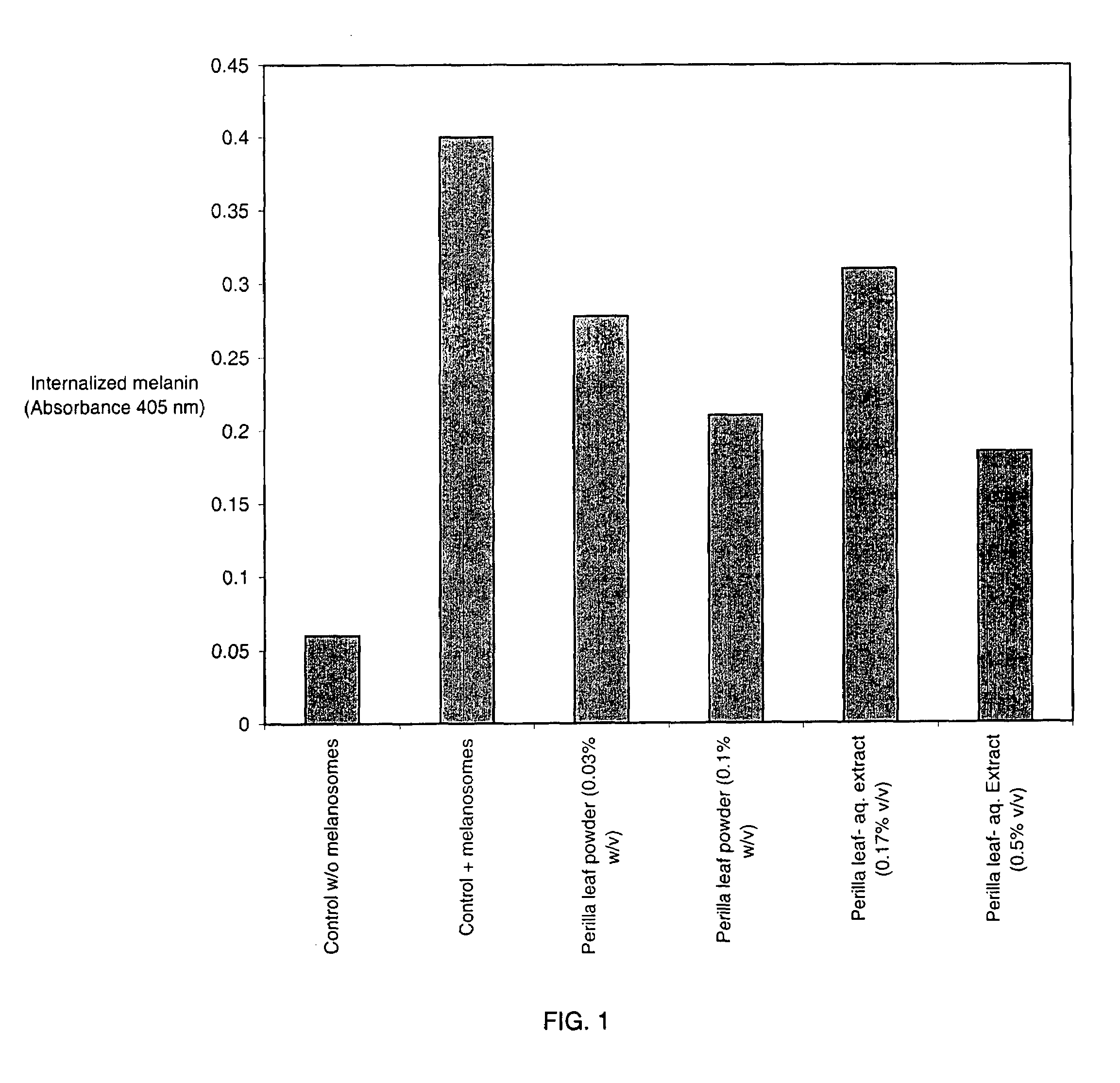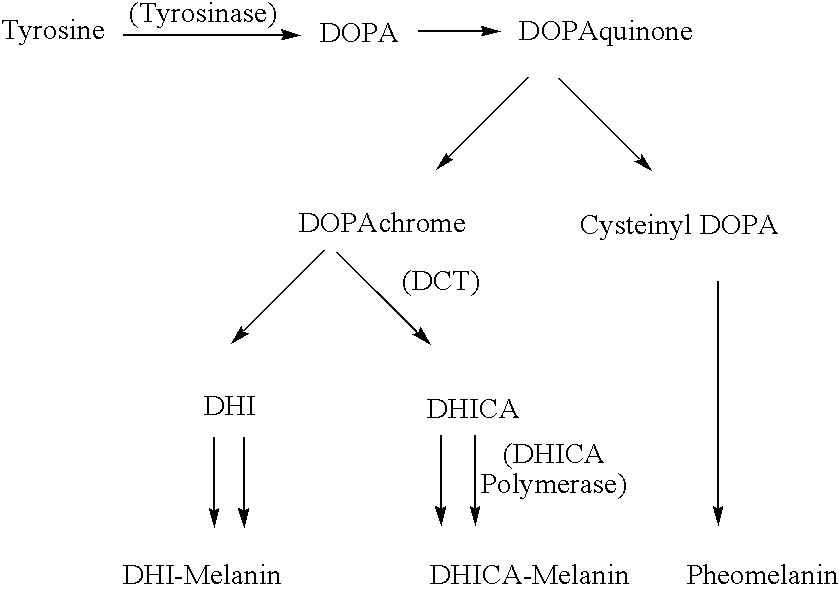Topical lightening compositions and methods of use
a technology of compositions and lightening, applied in the field of skin lightening, can solve the problems of not being able to achieve hypopigmentation, and achieve the effect of lightening the skin
- Summary
- Abstract
- Description
- Claims
- Application Information
AI Technical Summary
Benefits of technology
Problems solved by technology
Method used
Image
Examples
example 1
DOPAchrome Tautomerase Assay (Coconut Water)
[0033]DOPAchrome Tautomerase (DCT) activity was assayed according to the method disclosed in Chakraborty et al., 1998, Effect of arbutin on melanogenic proteins in human melanocytes, Pigment Cell Res. 11: 206-212. Specifically, ice-cold DOPA (0.5 mg per ml of 0.1 M sodium phosphate buffer, pH 6.8) was mixed with Ag2O (30 mg Ag2O: 1 mg DOPA) for about 1 minute and filtered through a 0.22 μm Millipore filter. DCT was assayed spectrophotometrically by adding up to 0.1 ml cell extract to 0.5 ml of a solution of freshly prepared DOPAchrome (˜0.5 mg / ml). Reactions were carried out at room temperature in plastic cuvettes, and the disappearance of absorption at 475 nm was followed. Phenylthiourea (1 mM) was added to the reaction mixture, because the presence of tyrosinase in the cell extract can interfere with the assay. The percentage conversion of DOPAchrome was calculated per mg of protein extract and normalized against the control. It was demo...
example 2
DHICA Polymerase Assay (Coconut Water)
[0034]A DHICA polymerase assay was done according to the method disclosed in Chakraborty et al., 1996, Polymerization of 5,6-dihydroxyindole-2-Carboxylic acid to melanin by the pmel17 / silver locus protein, Eur. J. Biochem. 236: 180-188. Specifically, the cell extract (0.5 ml, 150-200 μg protein) was passed through a wheat germ agglutinin column (1 ml bed volume) equilibrated with lysis buffer. The bound material was eluted with 0.5 ml 1M N-acetyl glucosamine, which contains crude DHICA polymerization factor and other melanogenic proteins. A reaction mixture of 0.5 ml containing either the enzyme preparation to be measured (20 μg protein from wheat germ agglutinin eluates) or the appropriate buffer blank, DHICA (0.5 mM), and 100 mM sodium phosphate buffer, pH 7.0. Phenylthiourea was also included to inhibit endogenous tyrosinase activity in the preparation.
[0035]Spectrophotomeric reading of the absorbance of the reaction mixture was taken at T=0 ...
example 3
Melanosome Uptake Assay (Perilla Leaf Extract)
Melanosome Isolation
[0036]Confluent cultures of B16 melanocytes produce moderate levels of melanosomes. However, to induce elevated melanosome production in this cell line, semi-confluent (60%) cultures of B16 cells were treated for approximately 36 hours with normal growth medium supplemented with 10 mM ammonium chloride (final conc.). The medium was then aspirated and the hypermelanotic cells were washed (2×2 ml) with distilled water to provide a hypotonic stress to the cells. An aliquot (2 ml) of a hypotonic lysis solution (0.02% NP-40 in water) was added to each plate and the plates were incubated for approximately 5 min at room temperature. Following verification of cell lysis using light microscopy, the cellular material from three (3) culture plates were pooled in a 15 ml conical tube and centrifuged at approximately (200×g) for 5 minutes to remove cellular debris. The resulting supernatant containing melanosomes was transferred t...
PUM
 Login to View More
Login to View More Abstract
Description
Claims
Application Information
 Login to View More
Login to View More - R&D
- Intellectual Property
- Life Sciences
- Materials
- Tech Scout
- Unparalleled Data Quality
- Higher Quality Content
- 60% Fewer Hallucinations
Browse by: Latest US Patents, China's latest patents, Technical Efficacy Thesaurus, Application Domain, Technology Topic, Popular Technical Reports.
© 2025 PatSnap. All rights reserved.Legal|Privacy policy|Modern Slavery Act Transparency Statement|Sitemap|About US| Contact US: help@patsnap.com


